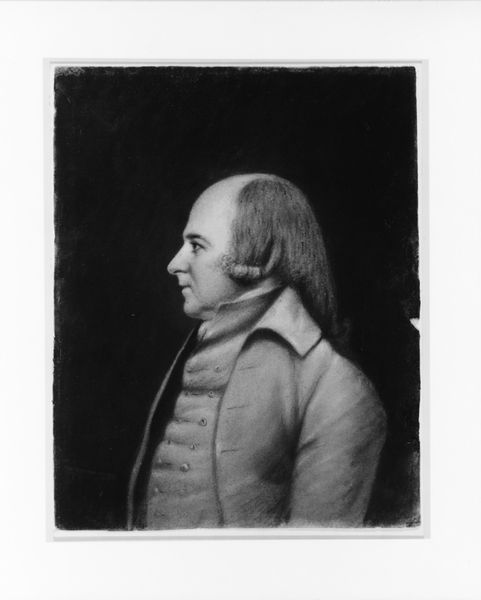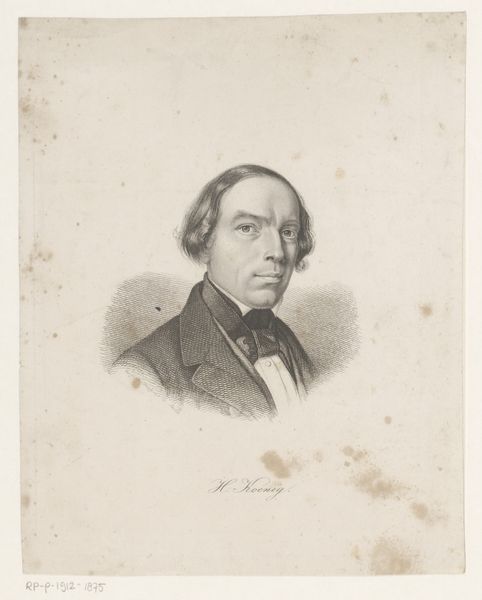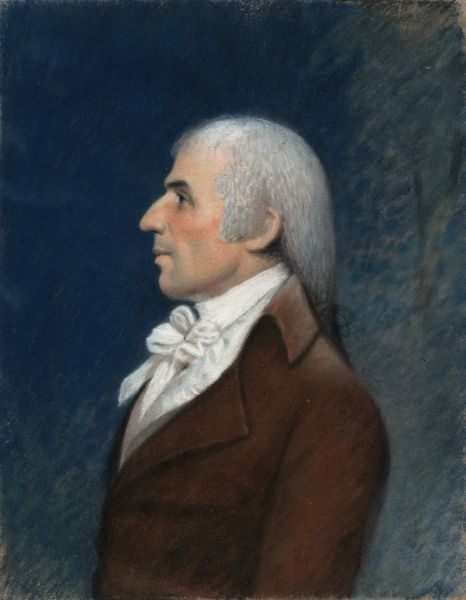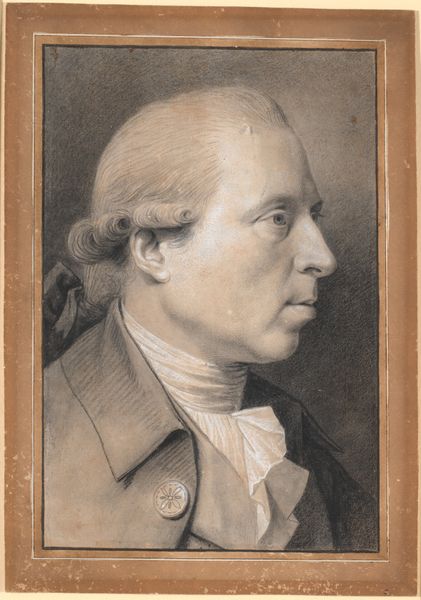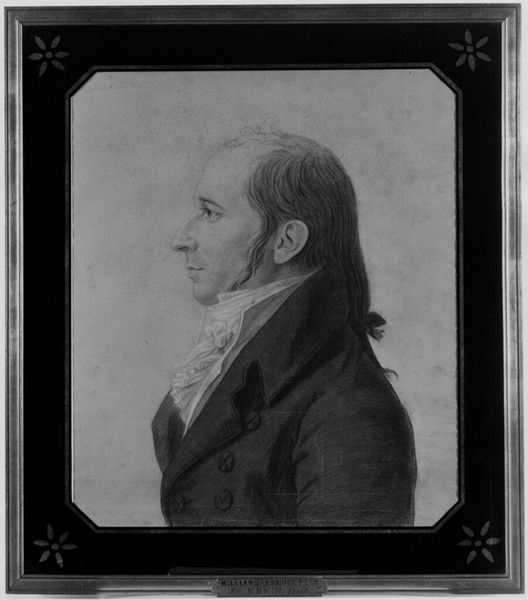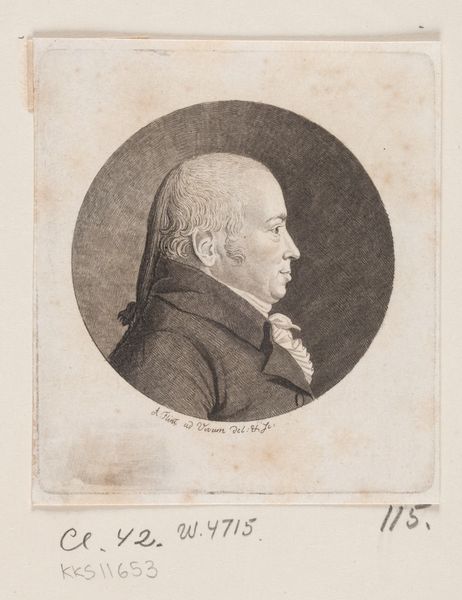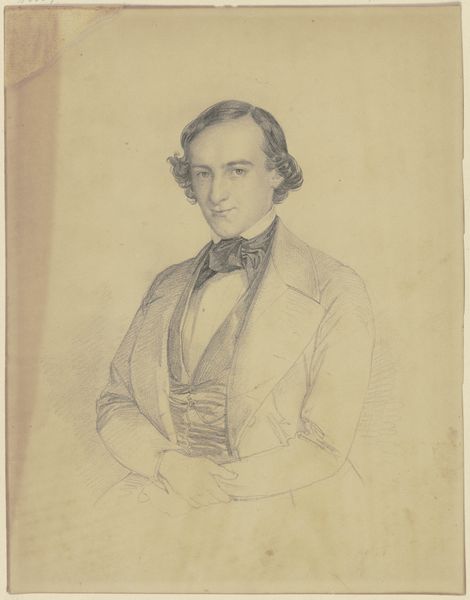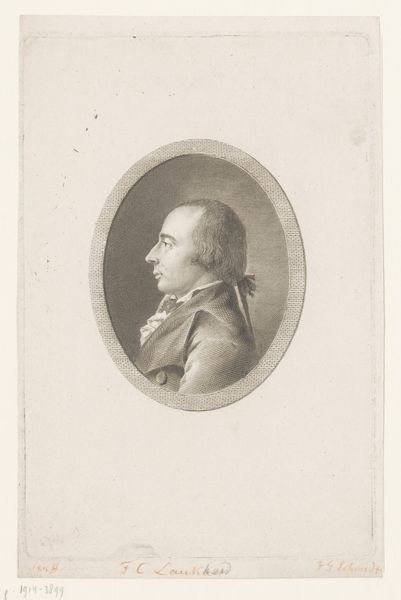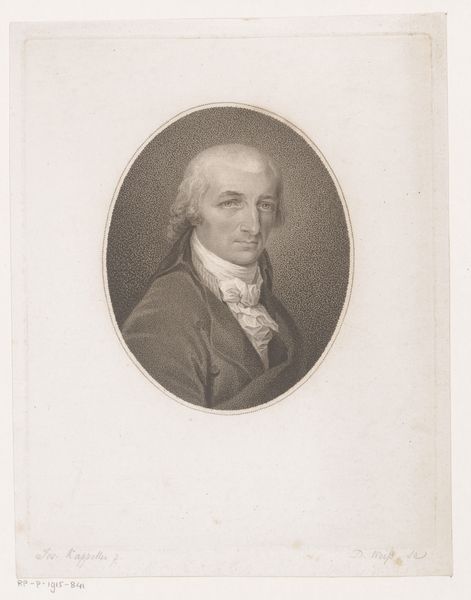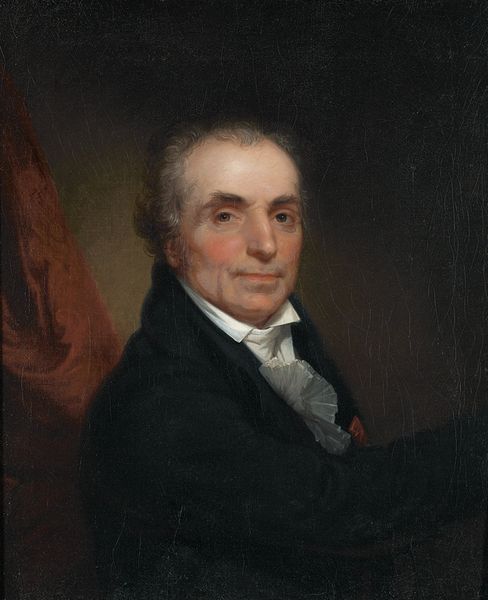
drawing, pencil, pastel
#
portrait
#
drawing
#
self-portrait
#
romanticism
#
pencil
#
pastel
Dimensions: 9 3/8 x 7 3/8 in. (23.8 x 18.7 cm)
Copyright: Public Domain
Curator: Take a look at this captivating portrait, "Albert Gallatin," crafted by James Sharples between 1793 and 1796. The medium is quite interesting; it's a combination of pastel and pencil on paper. What are your first thoughts? Editor: There's an immediate austerity to it. The deep blue background throws his pale features and dark coat into sharp relief, and his expression… contemplative, maybe? I’m drawn to how the light catches his face. Curator: Sharples was known for these profile portraits, and the use of pastel really allows for a certain softness, almost a flattering glow, wouldn’t you agree? Thinking about materials, procuring these fine pastels was part of crafting an elevated image for his sitters. What does it suggest about Gallatin's standing? Editor: Absolutely, it was a deliberate choice, reflecting the societal emphasis on appearances. The very act of commissioning this portrait implies wealth, status, and a desire for posterity. Given Gallatin’s later role as Secretary of the Treasury, this artwork highlights the aspirations of a man carving out his space in early American society. Were portraits like these displayed publicly? Curator: Not necessarily “publicly” in the sense of a gallery, but prominently within the home, signaling social networks and achievements. Think of it as a material assertion of Gallatin’s place in the developing American political landscape, beyond the walls of government buildings, showing his refinement. Editor: It brings up an interesting point about the power dynamics embedded within portraiture of the time. The choice of profile, the careful application of pigment—all these elements serve to project a certain image, to legitimize Gallatin’s presence and role within the nation's narrative. Was Sharples typically commissioned for political figures? Curator: Sharples made a career capturing prominent figures; demand increased dramatically during the time. Considering the practicalities, pastel portraits were faster and less expensive than oils. This speaks to a market where aspiring elites like Gallatin wished to participate in image-making but might have sought something more efficient. Editor: It’s like an early form of strategic branding. Viewing this piece, one gains insight into how individuals navigated the complex world of identity and legacy creation, using readily available materials. I now see less austerity and more strategic placement within early society and government. Curator: Precisely! These portraits were tools. Understanding Sharples' technique, his accessible medium, enhances our understanding of a nation eager to visualize itself. Editor: Thanks, this examination reveals that these seemingly simple choices play a much larger part in the history of crafting identity.
Comments
No comments
Be the first to comment and join the conversation on the ultimate creative platform.
